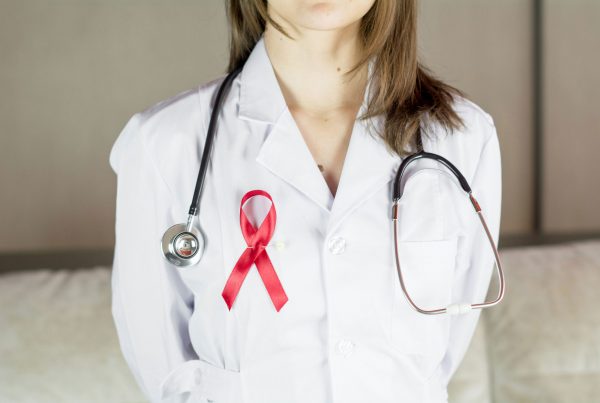Do you get nervous when meeting new people? Do you feel like people are judging you or don’t want to be around you? Have you ever avoided attending a social event because you didn’t want to embarrass yourself? If you answered yes to any of these questions, you may be experiencing Social Anxiety Disorder. Symptoms of social anxiety disorder may cause a person to isolate themselves, lose friendships, and struggle with daily activities. More than just a general sense of insecurity about doing certain things in public, social anxiety disorder can prevent you from feeling comfortable in any social situation and reaching your full potential in academic or professional settings. It is a common, but treatable mental health condition. If after reading this article you feel you, or someone you know, may be experiencing social anxiety disorder, it is important to seek help from a mental health professional as long-term suffering could lead to the development of psychiatric comorbidities.
What is Social Anxiety Disorder?
Social anxiety disorder, also known as social phobia, is a psychiatric condition that involves an intense, persistent fear of social or performance situations. More specifically, it is a fear of being watched or judged negatively by others and embarrassing yourself in public. It can be diagnosed at all ages, but the average age of onset for social anxiety symptoms is 15. Those suffering with social anxiety may be triggered by all or only specific social situations, such as dating, going to school, or going to a party. Some do not necessarily experience anxiety in social situations either. As described in the DSM-5, those with performance-only social anxiety experience intense fear in performance situations, like playing sports, dancing, or giving a speech. The fear that those with social anxiety experience is often so overwhelming that it can disrupt their daily life. Doing common things in public, such as eating, walking past a group of people, or using the restroom, can cause so much fear and anxiety that they avoid the trigger altogether and find a way to compensate instead.
While social anxiety does not have one single cause, there are particular factors that can increase a person’s likelihood of developing the disorder at some point in their life. Risk factors include a naturally introverted personality, an overactive amygdala, past trauma, and family history of mental illness. The amygdala is a brain structure that is heavily involved in the body’s fear response. One explanation for the intense anxiety of those with social anxiety is that their amygdalas are over-stimulated or hypersensitive, and thus, activate a fear response more readily. Those who have experienced trauma, especially childhood trauma such as abuse or neglect, are more likely to develop social anxiety. One study also found that the severity of social anxiety symptoms were also significantly associated with the amount of childhood trauma experienced. Lastly, research has found that those with a first-degree blood relative who has the disorder are two to six times more likely to develop social anxiety.
Social anxiety is the second most commonly diagnosed anxiety disorder after specific phobias. It affects approximately 15 million, or 7%, of American adults each year, and an estimated 12.1% experience social anxiety disorder at some point in their life. A survey conducted by the National Institute of Mental Health found that about 68% of those with social anxiety described having serious to moderate impairment according to the Sheehan Disability Scale. The same survey found that the prevalence of social anxiety disorder was higher in adult females (8%) and adolescent females (11.2%) than in adult males (6%) and adolescent men (7%).
Symptoms of Social Anxiety Disorder
It is common to feel nervous before a new experience, like starting a new job or meeting new people, but social anxiety is much more severe than that. Depending on the severity of a person’s social anxiety, it can affect them emotionally, behaviorally, and physically. Symptoms of social anxiety can also change over time. People may experience more severe flare ups when facing greater stress, change, or demands in their life. Some common emotional symptoms of social anxiety include:
- Being hyper-aware or feeling self-conscious of your speech and body movements
- Excessively worrying about embarrassing or humiliating yourself prior to a social situation
- Expecting the worst possible consequences from a potentially negative interaction during a social event
- Anxiety in anticipation for a social or performance situation
- Intense fear or anxiety during a social or performance situation
- Fear of physical symptoms may cause you embarrassment, such as sweating, blushing, or having a trembling voice
- Fear that others will notice you look nervous or fearful
- Persistent rumination or analysis of how you acted during a social situation following the event
- Intense embarrassment from identifying your perceived flaws in your interactions after a social situation
Some of the common physical symptoms of social anxiety disorder include:
- Blushing
- Sweating
- Increased heart rate
- Difficulty breathing
- Trembling
- Stomach pain or nausea
- Dizziness
- Muscle tension
Finally, the most notable behavioral symptom of social anxiety disorder is an intense avoidance of situations one feels they could embarrass themselves in. Common, everyday activities that those with social anxiety may find difficult to endure are starting conversations, speaking clearly in an interview, returning items to a store, making eye contact, entering a room where people are already seated, and much more. Those with social anxiety can suffer consequences in their professional or academic lives and in relationships (familial, friendship, or romantic) depending on the severity and frequency of their avoidance.
Social Anxiety Disorder vs. Avoidant Personality Disorder
Social anxiety disorder can easily be mistaken as avoidant personality disorder since a prominent symptom they often share is social isolation. Distinguishing between the disorders ultimately requires assessment by a mental health professional, but there are a few key differences to note. Firstly, one (social anxiety) is classified as an anxiety in the DSM-5, which is characterized by extreme and persistent worry or fear that is often strong enough to interfere with daily functioning. The other (avoidant personality disorder) is classified as a personality disorder in the DSM-5, which is characterized by an often long-term, rigid pattern of unhealthy thinking, functioning, or behaving. A second fundamental difference between the two disorders is in how people perceive their experiences. While those with social anxiety disorder are able recognize their worries or embarrassment as irrational, those with avoidant personality disorder tend to internalize those feelings of insecurity or worthlessness and believe them to be factual, intrinsic flaws. Third, and lastly, while those with avoidant personality disorder demonstrate patterns of avoidance in most or all areas of life, social anxiety may only involve avoidance in a few specific situations.
Diagnosing Social Anxiety Disorder
DSM-5 Criteria
According to the DSM-5, the diagnostic criteria for social anxiety disorder includes:
- Marked fear or anxiety about one or more social situations in which the individual is exposed to possible scrutiny by others
- The social situations almost always provoke fear or anxiety
- The fear or anxiety is out of proportion to the actual threat posed by the social situation and to the sociocultural context
- The social situations are avoided or endured with intense fear or anxiety
- The fear, anxiety, or avoidance causes clinically significant distress or impairment in social, occupational, or other important areas of functioning
- The symptoms are persistent, typically lasting for 6 months or more
- The symptoms cannot be better explained by the another mental disorder or substance abuse
- The assessor should determine if the fear is restricted to speaking or performing in public (as this would be considered performance-only social anxiety disorder)
Testing for Social Anxiety Disorder
There are a variety of tests that can be used to assess someone for social anxiety disorder so mental health professionals in different settings may use different assessments. Two commonly used tests are the LSAS and BSPS. The Liebowitz Social Anxiety Scale (LSAS) is the most commonly used scale for assessing social anxiety disorder. It is a 24-question survey that asks people to assess their anxiety symptoms. The Brief Social Phobia Scale (BSPS) is an 11-question survey that is used to measure the severity of fear and avoidant behaviors. It may also be used to assess the effects of treatment over time.
Treatment for Social Anxiety Disorder
Social anxiety disorder is a common, treatable mental health condition. The most commonly utilized forms of treatment for social anxiety disorder are psychotherapy (talk therapy), support groups, and medication. Cognitive Behavioral Therapy (CBT) is the most effective method of psychotherapy for treating anxiety disorders. It involves helping a person identify their negative thought patterns so they may learn and develop healthy coping skills in a controlled setting. Exposure CBT is also used to treat those with social anxiety disorder. It involves directly facing one’s phobia but at a gradual pace. This can help people practice their newly-learned coping mechanisms and slowly build their tolerance for particular social or performance situations. Although a support group for those with social anxiety disorder may seem ironic, it can be validating to hear about how others struggle with the disorder and it may be useful to learn what they do to approach and overcome certain social situations. Finally, the three most commonly used medications in the treatment of social anxiety disorder are beta-blockers, anti-anxiety, and antidepressants. Beta-blockers prevent the stimulating effects of epinephrine (adrenaline), and are therefore especially useful in soothing physical symptoms of the disorder by reducing heart rate, controlling trembles, and more. Anti-anxiety medication, such as benzodiazepines, serves to reduce anxiety quickly. However, a tolerance can be built so they are typically only prescribed for a few months at a time. Lastly, antidepressants, most notably SSRIs, are also known to reduce feelings of anxiety or fear. Unlike antianxiety medications, antidepressants often take a few weeks to produce an effect and can therefore be prescribed long-term.







